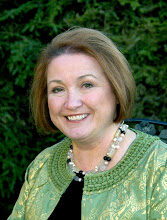
“Pain is a relatively objective, physical phenomenon; suffering is our psychological resistance to what happens. Events may create physical pain, but they do not in themselves create suffering. Resistance creates suffering. Stress happens when your mind resists what is… The only problem in your life is your mind’s resistance to life as it unfolds. ” – Dan Millman
Health care providers are extraordinarily well trained and well equipped to treat pain. Pharmaceutical companies have developed drugs that, on a physiological level, can greatly reduce and even eliminate most of our discomforts. Physical therapists, physicians, nurses, chiropractors, and many others are schooled at great lengths on different evidenced-based techniques for pain modulation. While we have become masters of pain reduction, we’ve fallen short in our ability to recognize and treat suffering. Our failing rests in our belief that pain and suffering are one in the same: if we cure pain, we will eliminate suffering by proxy. The reality, however, is that pain and suffering are intertwined. Pain is biological, while suffering is the psychological and social manifestation of that pain. Making strides to treat both pain and suffering is the only way to ensure each patient’s optimal outcome. Rather than focusing solely on the biological realm, as so many of us have grown accustomed, the key is to utilize the true definition of the biopsychosocial model of wellness: treat the biological, psychological, and social aspects of a patient equally. Or as Pam Ressler states much more concisely, “You need to treat the whole person”.
Pam founded Stress Resources LLC in 2001 with the intent to focus on the psychosocial aspect of wellness, the suffering that is tied so inherently with pain. In this wellness model, disease and illness are two separate entities where disease is the medical diagnosis — the biological issue — and illness is the byproduct of that disease. Illness truly envelops a person, and primarily affects the psychosocial aspect of their being. Stress Resources does not ignore the biological aspect of wellness, it just recognizes that our current medical model is already successful in treating it. Their primary focus is to provide clients with tools and strategies to build resiliency and Stress Hardiness. Resiliency is the ability to bounce back from illness effectively by being flexible amidst life’s challenges and constant change. Stress Hardiness, which has become the gold standard for stress reduction programs, is an evidence-based approach to reducing stress by empowering clients with the Three C’s: a sense of Control, Challenge, and Commitment. Stress Resources puts a high value on control, and more specifically on controlling internal factors. “Often we equate control with external factors, but that’s not the most effective place to start,” Ressler explains, “We have to focus on what we can control personally. We have to increase our level of internal control, and that’s what we try to do for our clients.”
Through her own research, Ressler has identified an additional component found in a resilient individual — a sense of communication. As Ressler puts it, “We are pack animals, we have a social component, and illness can sometimes take that social component away from us. Our research has found that people with life-limiting and life-altering illnesses that engage in social media such as blogging or tweet chats have a significantly decreased sense of isolation. The interactive process, combined with their ability to express their experience of their illness, gives them a sense of connection and helps to give their life meaning by putting their thoughts out there in an open forum.” To learn more about Stress Resource’s research into blogging, listen to Health Literacy Out Loud’s podcast featuring Ressler. Along with a link to the podcast, they also provide valuable references and examples of Ressler’s blogging program. Some of the additional tools that Pam arms her clients with include simple breathing techniques, body scan meditation, yoga, and therapeutic writing. Stress Resources, therefore, places a high emphasis on commitment via self-efficacy. Pam explains, “I teach the tools and tell clients to go out and use them. They don’t need me forever. In fact, the last thing many of these people need is another medical practitioner in their lives”.
Stress Resources is now a thriving entity, but it started as a passion project based on self-experience. Pam was introduced to the concept of resiliency in the 1980’s while she was working as a nurse, and learned some of the tools via Harvard University professor Dr. Benson’s research on mind-body medicine. Even with the skills she acquired, she was not prepared for the tragedy that her life had in store. In 2001, her world came crashing down when her 14 year old son was diagnosed with a rare form of cancer. The view from the other side of the nurse’s station radically and permanently changed her perspective, and opened her eyes to the true power of communication.
“My son’s experience was very painful, and the only time he was pain-lessened was when he was able to be a kid again — when he was able to step away from his role as cancer patient and be the cool, popular kid who could just banter with his friends on AOL Instant Messenger from his hospital bed. It made me realize that we’re far too medicalized. Seeing the inability of all of the opioids and all of the treatments in our medical arsenal to decrease much of my son’s pain made me realize that pain perception and suffering are interlayered, and we’re not dealing with suffering with pain patients. It was a light-bulb moment for me when I realized that the only thing that made him feel better had nothing to do with his formal treatment.”
Her son tragically passed away in April of 2001, and Ressler turned tragedy into opportunity, founding Stress Resources in the same year. Her story is a microcosm of Stress Resources’ mission: to help individuals locate and hold on to the one or two things that are going right when everything seems to be going wrong. Seeing her son finding solace in social media during his fight with cancer has turned her into an advocate for providing these resources to individuals that are in the same position. Soon after her son’s death, she and her husband donated laptops to Mass General’s Adolescent Unit with the hope that she could give other children the same sense of connection that her son found through technology. Since that time, she has become fascinated with the power that social media can have in providing a platform for connection, and has utilized that power in many of her clients’ programs. (Of note, I highly recommend reading Bruce Morgan’s article A World Of Hurt. He does a fantastic job in chronicling Nick Ressler’s fight with cancer and relating it to Pam’s current research on chronic pain and suffering.)
While a large percentage of Stress Resources’ clients are suffering from life -limiting illnesses such as ALS, cancer, or multiple sclerosis, Ressler also works with health care providers, stressed out business executives, and primary caregivers. She believes that everyone can benefit from being more resilient, especially those in the high-stress health care environment, which is why she created different continuing education courses for providers to work on developing their own Stress Hardiness, which you can find more information about here. Perhaps the most unique program that Stress Resources has created is the 8-week Mindfulness Based Stress Reduction Program. In addition to being open to patients, the program is also open to providers, with one caveat: providers have to leave their white coats at the door. The result, therefore, is that everyone is on even ground, each individual nothing more than a human working to build their own stress resiliency.
Despite her continuing education courses, having a private caseload, and conducting research, Ressler also finds time to teach courses at the UMASS College of Nursing and Health Science and at the Tufts Medical School’s Pain Research and Policy Program where she provides future clinicians with the strategies they need to manage their own stress. This is another passion of Ressler’s: “I see the need for students to have these tools before they enter the workplace. We aren’t trained to deal with the stresses of health care, and after graduation it is sink or swim. Right now, we’re not helping providers stay in their professions, which is why I believe there is a very high turnover rate — people just get burnt out.”
In the end, both patients and providers need to build their resilience by arming themselves with tools to effectively deal with the stress that their lives entail. Ressler uses the symbolism of the devastation of 9/11 to describe the importance of being able to cope with adversity: “We’re all going to have our own personal 9/11, and we need to prepare ourselves with resiliency for when it comes, because we don’t know what it’s going to look like, or what is going to happen.” As clinicians, we need to be aware that each patient that is dealing with pain is also dealing with suffering, and tailor our treatment plan accordingly. We need to help each individual gain a higher sense of control, challenge, commitment and communication in order to ensure their optimal outcome. And, as Stress Resources has shown, utilizing the power of technology to build our patients’ resilience might be our most effective option.
True to form, Pam Ressler makes herself readily available through social media. You can visit her website, subscribe to her blog, follow her on Facebook, Twitter (@StressResources or @Pamressler), or LinkedIn.
If you or someone you know is making a difference in health care, and has a story worth sharing, send an e-mail to team@theravid.com with the subject line “The Megaphone” or tweet us @TeamTheraVid.
Ryan Klepps, TheraVid LLC


